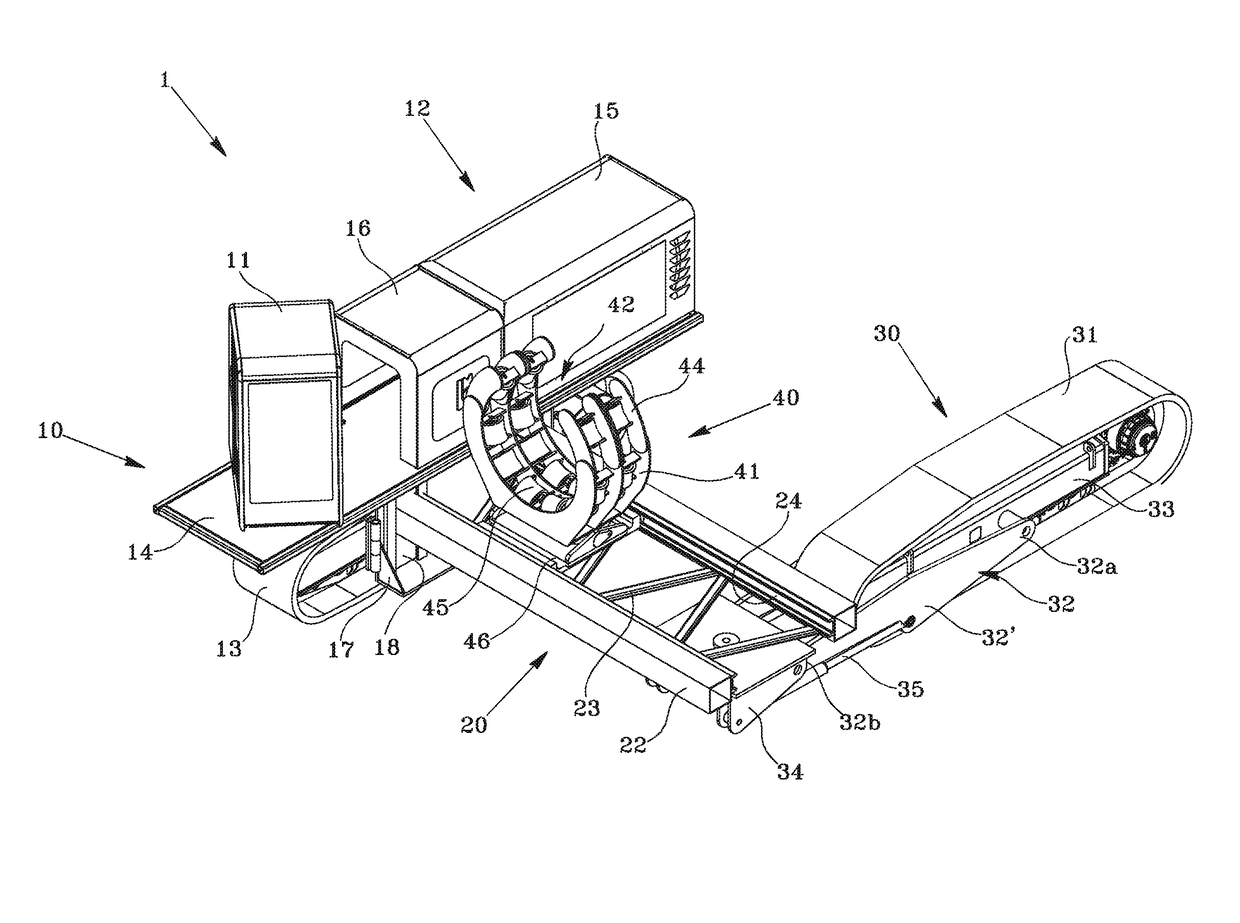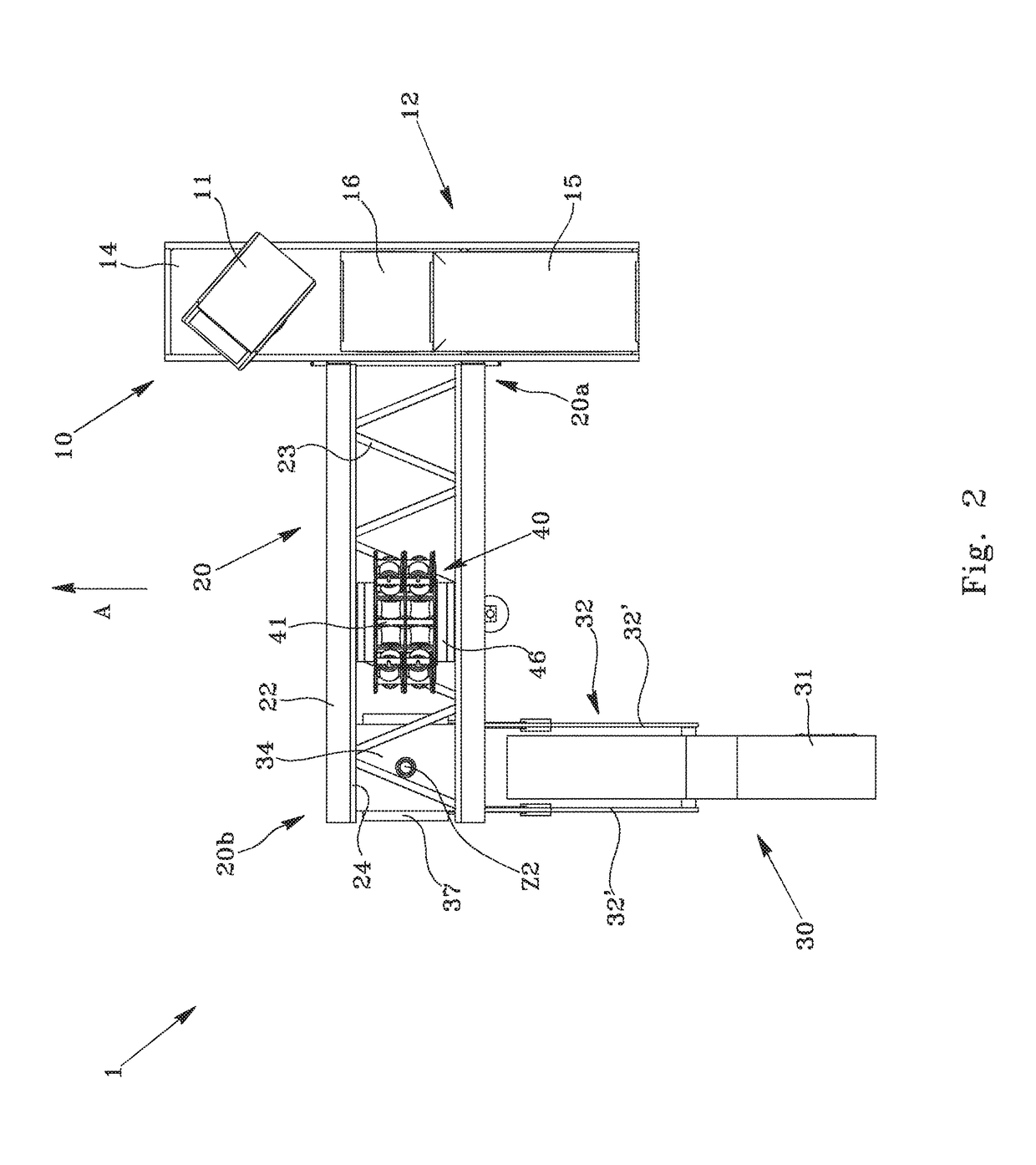Pipe laying machine and pipe laying method
a technology of pipelayer and pipe laying method, which is applied in the direction of pipe laying and repair, soil shifting machine/dredger, pipe/joint/fitting, etc., can solve the problems of generating the maximum overturning moment, high cost of both purchase or rental of a large number of machines, and the load bearing capacity of these pipelayers is greater, so as to reduce the number of machines employed, the effect of easy operation and control
- Summary
- Abstract
- Description
- Claims
- Application Information
AI Technical Summary
Benefits of technology
Problems solved by technology
Method used
Image
Examples
Embodiment Construction
[0059]With reference to the accompanying figures, the pipe laying machine 1 comprises a self-propelled chassis, indicated as a whole with 10, on which a driver's cab 11 is installed. Said self-propelled chassis 10 is moved in a direction of forward movement A by a powertrain 12, preferably by means of at least one continuous track 13 or, alternatively, by means of wheels or other rolling means suitable for rough ground and / or with reduced adhesion (soil, mud, etc.).
[0060]According to a preferred aspect of the invention, the driver's cab 11 and the powertrain 12 are mounted on a platform 14, in turn supported by said continuous track 13. The driver's cab 11 is preferably connected to said platform 14 by means of a fifth wheel (not visible in the figure) that allows a rotation about a vertical axis so that the operator can face the direction of forward movement A and the trench in which the pipe is laid.
[0061]According to the invention, the powertrain 12 can include an endothermic eng...
PUM
 Login to View More
Login to View More Abstract
Description
Claims
Application Information
 Login to View More
Login to View More - R&D
- Intellectual Property
- Life Sciences
- Materials
- Tech Scout
- Unparalleled Data Quality
- Higher Quality Content
- 60% Fewer Hallucinations
Browse by: Latest US Patents, China's latest patents, Technical Efficacy Thesaurus, Application Domain, Technology Topic, Popular Technical Reports.
© 2025 PatSnap. All rights reserved.Legal|Privacy policy|Modern Slavery Act Transparency Statement|Sitemap|About US| Contact US: help@patsnap.com



